 Katie Morley
Katie Morley
Feb 9, 2024
 Katie Morley
Katie Morley
Feb 9, 2024
Marketing at enterprise-level companies is complex.
Enterprise marketers typically work with large, geographically dispersed teams and stakeholders, each with their own goals and ideas. Processes can be slow and heavy because they must meet the needs of many regional and local markets.
Enterprises must also manage bloated technology stacks and deal with large amounts of (usually) siloed customer data.
To overcome these challenges, most enterprise marketing teams need to navigate three key problems:
Put simply, enterprise marketing is about navigating the complexity that comes with scale and making the most out of the vast resources and broad reach of large organizations.
In this guide, you’ll learn what enterprise marketing is, its particular challenges, and useful strategies. You’ll also learn what to look for in enterprise marketing software and explore real-world success stories.
Enterprise brands like Vodafone, Adidas, Samsung, Philips, and Coca-Cola use Insider to increase their marketing ROI by personalizing customer experiences, building and automating cross-channel campaigns, and much more. To learn more, visit our website or schedule a demo with our team.
What is enterprise marketing?
3 characteristics of enterprise marketing
The biggest challenges of enterprise marketing
5 proven enterprise marketing strategies for improving revenue, efficiency, and ROI
What to look for in an enterprise marketing platform
Examples of successful enterprise marketing via personalization and automation
Elevate your brand with Insider: Unify, streamline, and personalize at scale
Enterprise marketing is a strategic approach — consisting of diverse, multifaceted, and multichannel strategies — used by large-scale organizations to drive revenue in different markets by expanding their customer base and retaining existing users.
Enterprise marketing strategies usually involve coordinated efforts across different departments within an organization. Their objective is to create a unified and consistent customer experience that aligns with the organization’s brand values and marketing goals.
Marketing at enterprise-level organizations differs from traditional marketing in three main ways.
Enterprises typically work across multiple countries and regions. They also cater to a more varied customer base, encompassing different demographics, preferences, and behaviors.
This requires strategies that not only have global appeal but are also adaptable to local cultures, languages, and market dynamics.
The coordination of diverse team members and stakeholders is essential for the success of this endeavor. This adds layers of complexity to operational processes and necessitates a balancing act between global oversight and local expertise.
Lastly, large enterprises typically offer a wider range of products or services that cater to various market segments. This requires more intricate strategies to effectively communicate the benefits and features of each product line to the right audiences.
Small-business marketing often focuses on two or two channels due to budget constraints and limited experimentation capabilities.
In contrast, enterprise marketers leverage a wider array of channels across digital (like social media, email, SEO, and PPC) and traditional media (such as television, radio, and print). This broad spectrum allows enterprise businesses to reach diverse and widespread audiences.
Besides using multiple channels, enterprise markets must also ensure these channels work together cohesively. This means the messaging and branding are consistent across digital and physical platforms, creating a unified brand experience.
Enterprise-scale companies have access to vast amounts of data from various sources like customer interactions, target market research, sales transactions, and social media analytics. This is much more extensive than the data typically available to small-business marketing efforts.
Enterprises typically have to use sophisticated analytics tools to understand and track customer interactions across all channels. This enables them to create more targeted and effective campaigns. For example, data collected from in-store purchases can be used to deliver more personalized online experiences and vice versa.
Due to its inherent scale and complexity, the four challenges below are all too common to enterprise marketing.
Large-scale organizations typically accumulate a diverse set of enterprise marketing tools and legacy systems, including customer relationship management and lead scoring tools, digital analytics platforms, email and SMS software, and so on.
Integrating these tools is vital for gaining a holistic understanding of customer behaviors and preferences. However, integrations often require tons of resources, effort, and engineering hours.
With complexity also comes increased financial costs around procurement, implementation, and maintenance. Many enterprises respond to these costs by moving to integrated marketing platforms that streamline their marketing operations. This has the additional benefit of being more time-efficient, as marketers don’t have to constantly jump between different systems.
Once a company’s market presence expands to a certain scale, so does the sheer volume and diversity of tasks needed to serve those markets. These range from high-quality content creation and distribution across multiple channels to the personalization of marketing messages for different customer segments.
For instance, a digital marketing team might start by manually segmenting audiences for different enterprise marketing campaigns. However, that task becomes increasingly laborious and prone to errors as the customer base expands. Similarly, launching campaigns across various touchpoints — like email, SMS, and social media — requires significant time and effort for large businesses.
To address these challenges, many enterprises gradually adopt various marketing automation solutions. These technologies can improve workflows by automating repetitive tasks such as data collection, audience segmentation, and even certain aspects of content creation (e.g., generating subject lines or entire social media posts).
Marketing is a domain offering a multitude of channels and tactics, so pinpointing where to allocate money, time, and effort becomes a strategic endeavor. The challenge lies not just in selecting the right channels and tactics, but also in balancing the investment in each to maximize returns.
Decisions around allocation often involve a thorough analysis of both the market and the organization’s past performance metrics. A deep dive into data can reveal insights about which channels have historically yielded the best ROI, where the target audience is most active, and what types of content resonate with them.
However, for enterprises, it’s also important to align resources with the company’s broader strategic goals.
For instance, if the aim is to expand into new markets, more resources might be directed towards experimentation and developing new strategies, even if their current ROI is lower compared to established ones. Conversely, if the focus is on strengthening brand loyalty, then efforts could be channeled into customer engagement and retention strategies.
A major challenge for enterprises lies in tailoring messages to resonate with diverse local cultures and consumer preferences, all within the framework of a unified brand voice and identity.
The complexity is compounded in an omnichannel environment, where consistency across various platforms — from websites and social media profiles to in-store experiences — is of the highest importance. Customers in different regions expect personalized, timely, and relevant interactions, demanding a marketing strategy that is both globally coherent and locally adaptable.
The key to success is the ability to balance global branding with local market engagement. Utilizing data analytics and customer feedback can help in understanding each market’s unique characteristics and boost brand awareness by ensuring that marketing efforts are culturally relevant and resonant.
Below, we’ll explore five tried-and-tested enterprise marketing strategies that can help large organizations personalize the customer experience, automate campaigns, and work more efficiently.
Successful enterprise marketing management requires a good view of the customer journey, which is impossible with disjointed customer data. An appropriate solution for this is to centralize your data in one place using a unified data repository such as a customer data platform (CDP).
CDPs allow marketers to aggregate their customer data, as well as understand and predict customer behavior and preferences with greater accuracy.
By amalgamating data from various touchpoints — social media interactions, purchase history, website visits, and more — CDP creates a rich, multi-dimensional profile of each customer. For example, Insider’s enterprise CDP overcomes data silos and creates accurate, 360-degree customer views.
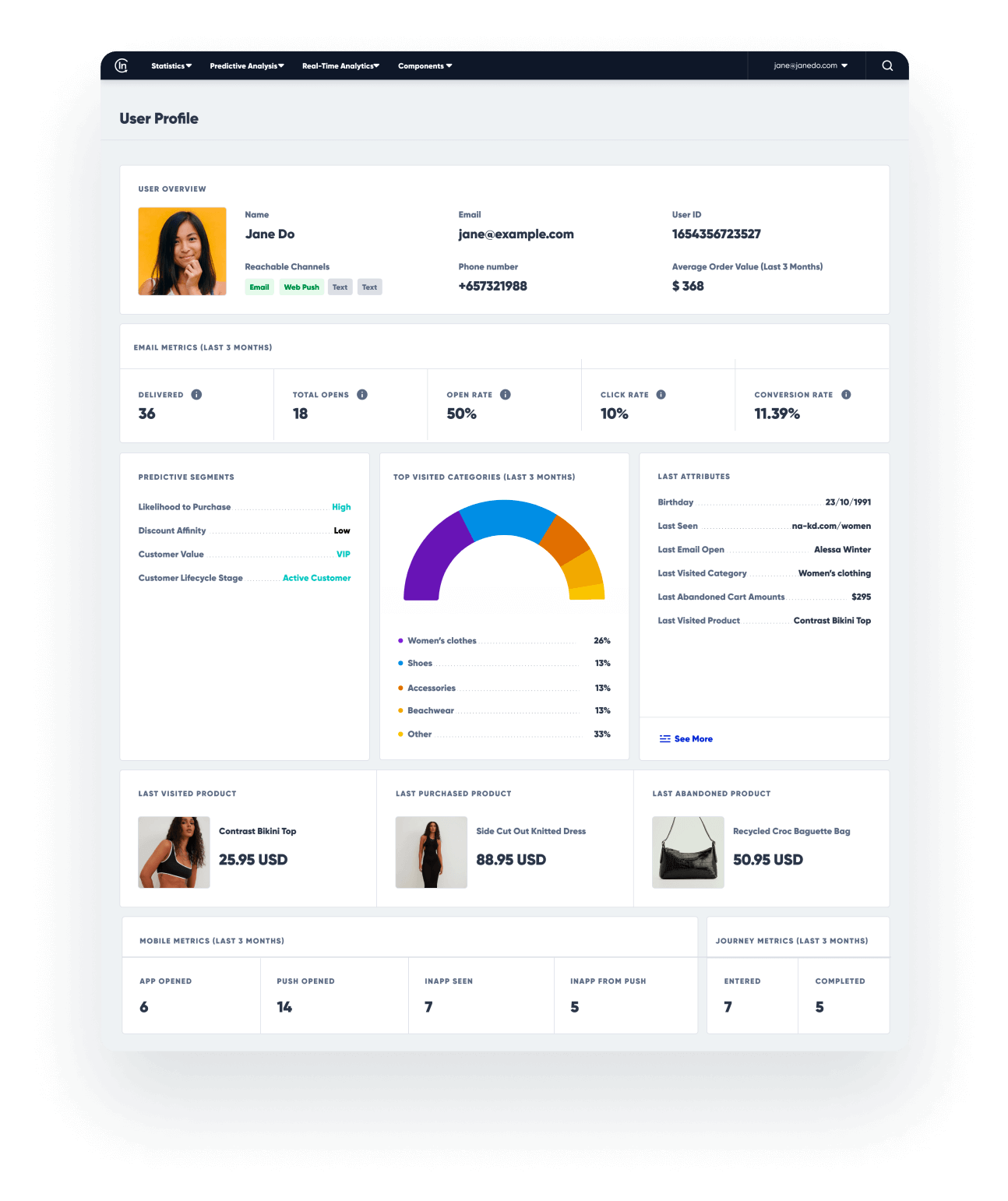
Insider’s CDP offers integrations with over 100 offline and online data sources (including content management systems, analytics tools, email marketing platforms, and more) allowing you to incorporate everything from online behavior to in-store transaction details and email correspondence into a unified customer profile.
This benefits enterprise marketing teams by:
Insider’s global, experienced support team can guide you through the data integration process, helping you connect the right sources for a smooth implementation. That’s why our platform has always been noted for its ease of setup, ease of use, and support quality.
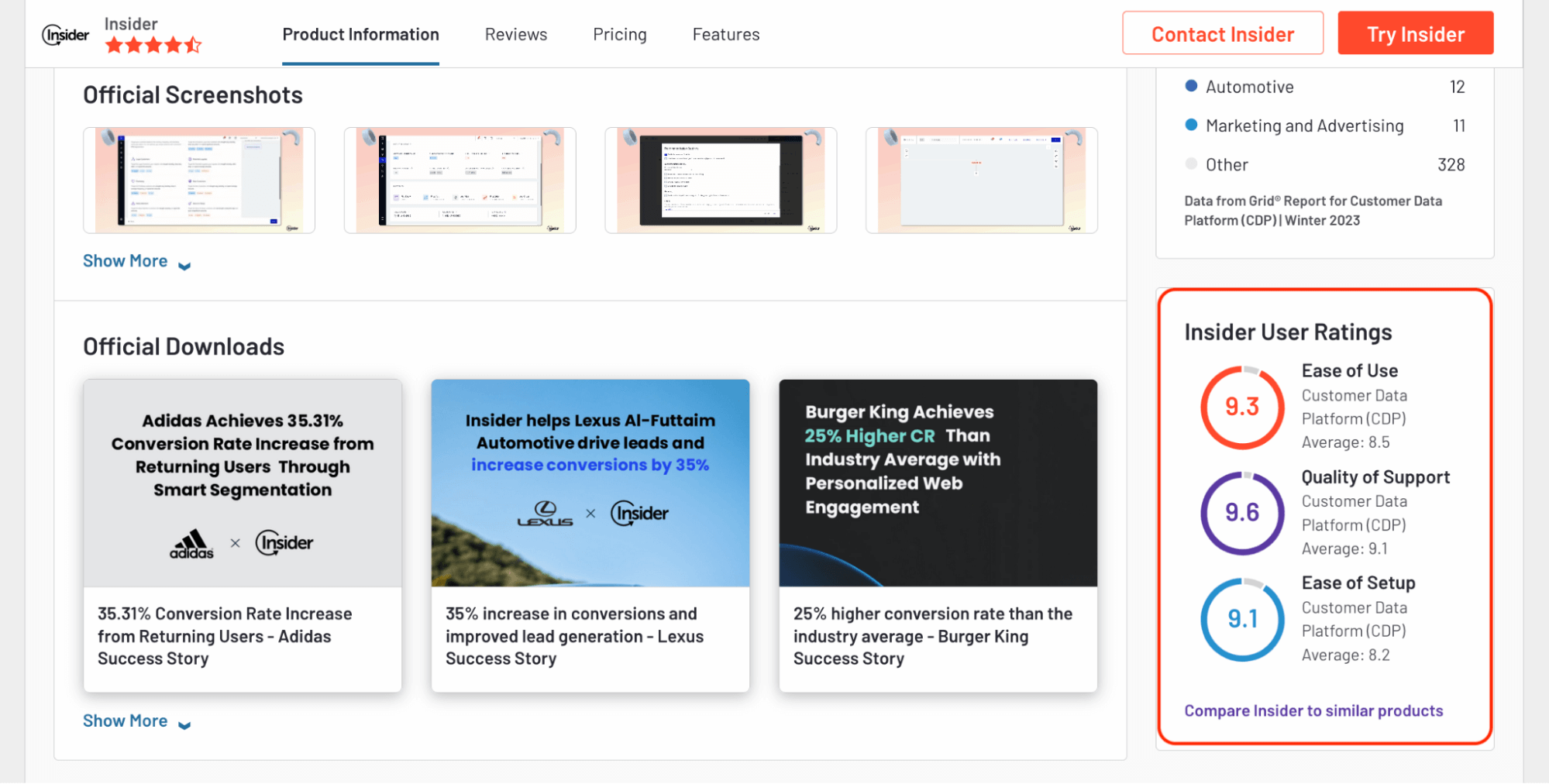
The key to efficiency in enterprise marketing is to use as few solutions as possible for your marketing programs and workflows. This is where unified marketing platforms are so valuable.
With a unified platform, marketing teams can efficiently create and deliver connected campaigns with minimal need to toggle between different point solutions.
A unified platform also reduces the financial burden of subscribing to multiple solutions, offering a more cost-effective and manageable solution for your marketing needs. In other words, the more you can consolidate your tools and channels, the more you can reduce your total cost of ownership (TCO) of your marketing stack.
For example, Insider provides a centralized platform where you can create, oversee, and automate campaigns across 12+ native channels. This eliminates the need for multiple channel-specific tools, each with its own set of login credentials and user interfaces.
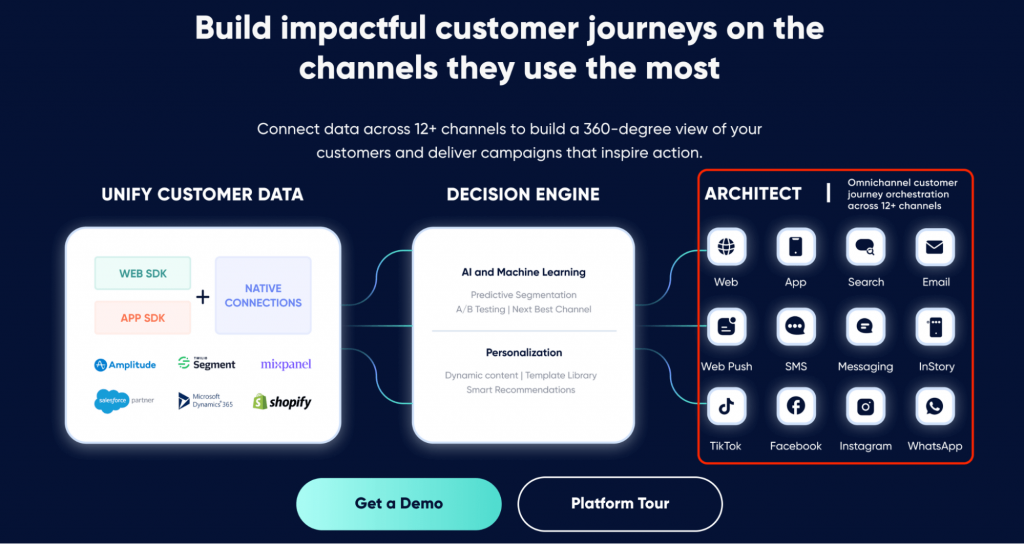
Insider’s platform is flexible, so you can only use those channels or capabilities that you need to, at any one time. This can be useful if you take a phased approach to implementing Insider by starting with one or two channels (e.g., email and on-site) and expanding to others over time.
AI’s ability to process and analyze millions of data points allows businesses to deliver content that resonates with individual preferences across a vast customer base. This technology goes beyond traditional analytics and automation solutions by utilizing complex algorithms to uncover hidden patterns in customer behavior, preferences, and engagement.
For example, Insider’s personalization engine (and its AI algorithms) can match every user with relevant content, messaging, and product recommendations, thus personalizing every touchpoint in a customer’s experience.
Insider also lets you bring 12+ channels under a single platform and use one solution to personalize all touchpoints, including:
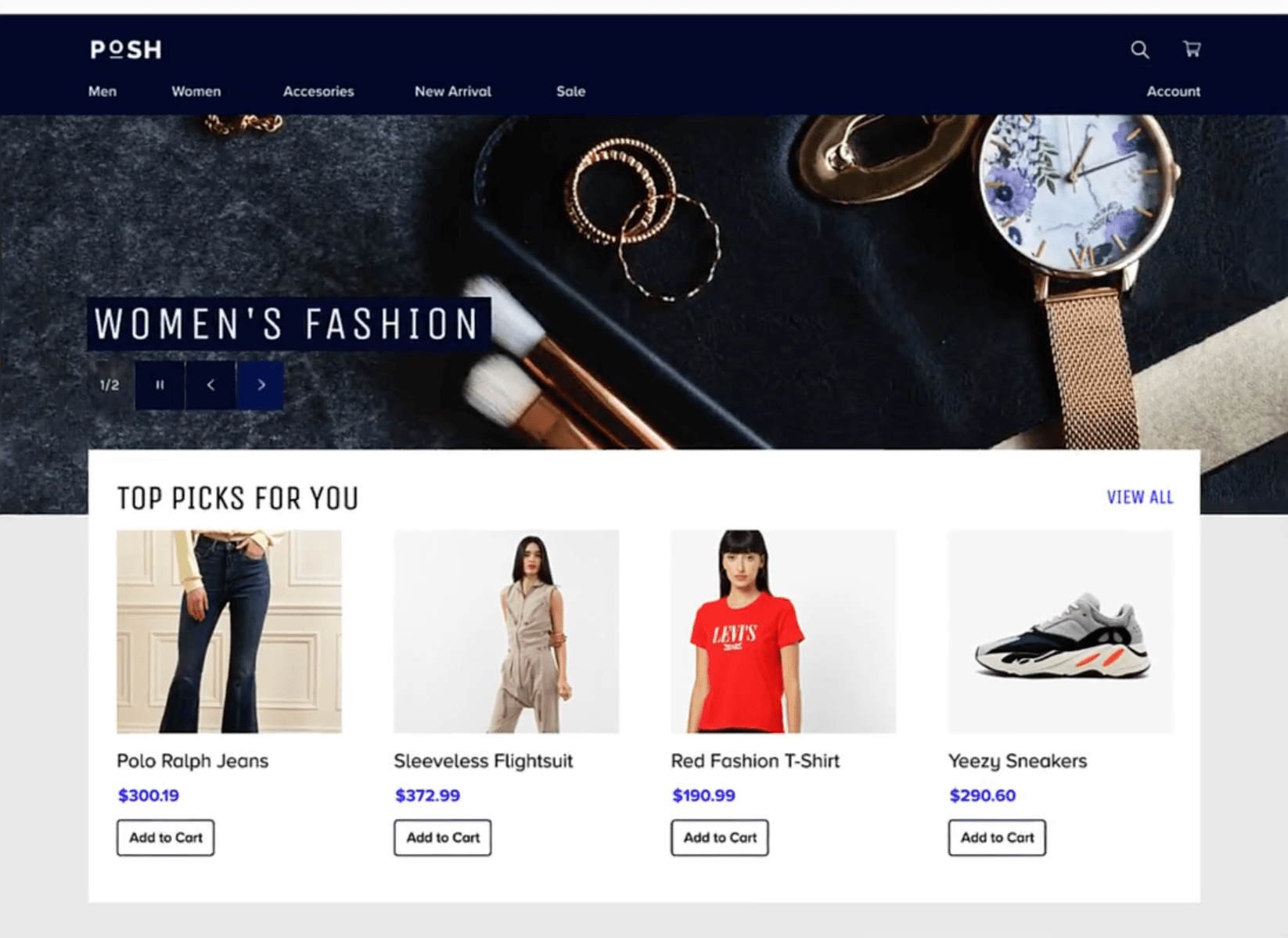
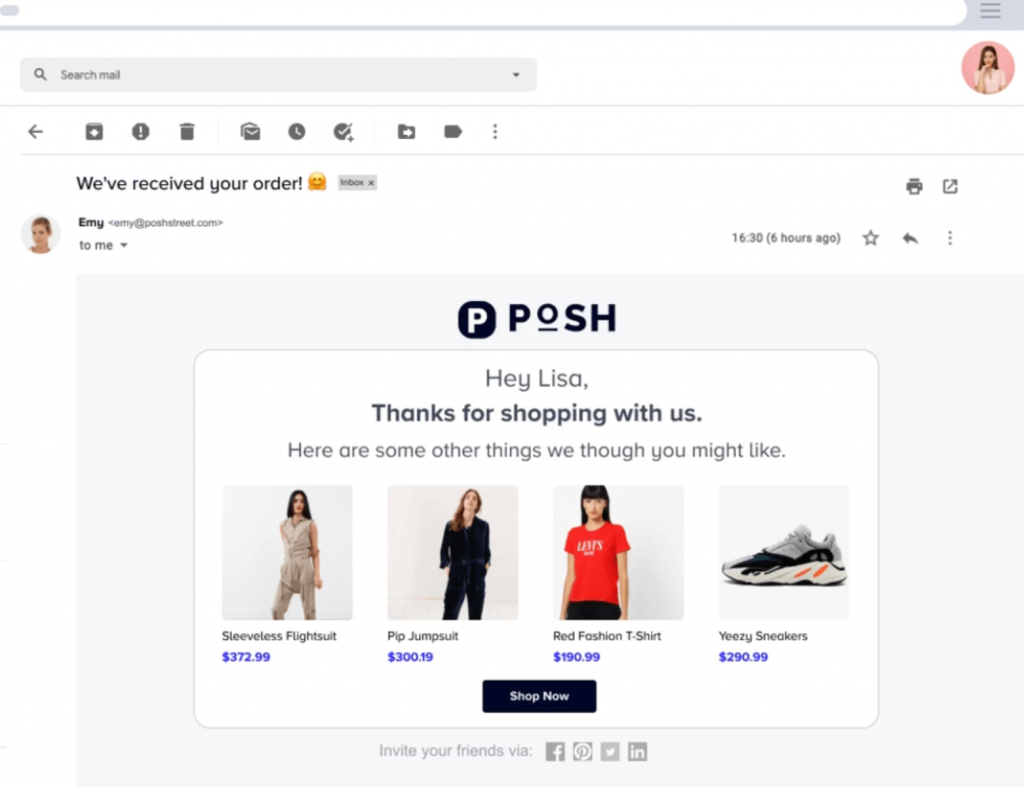
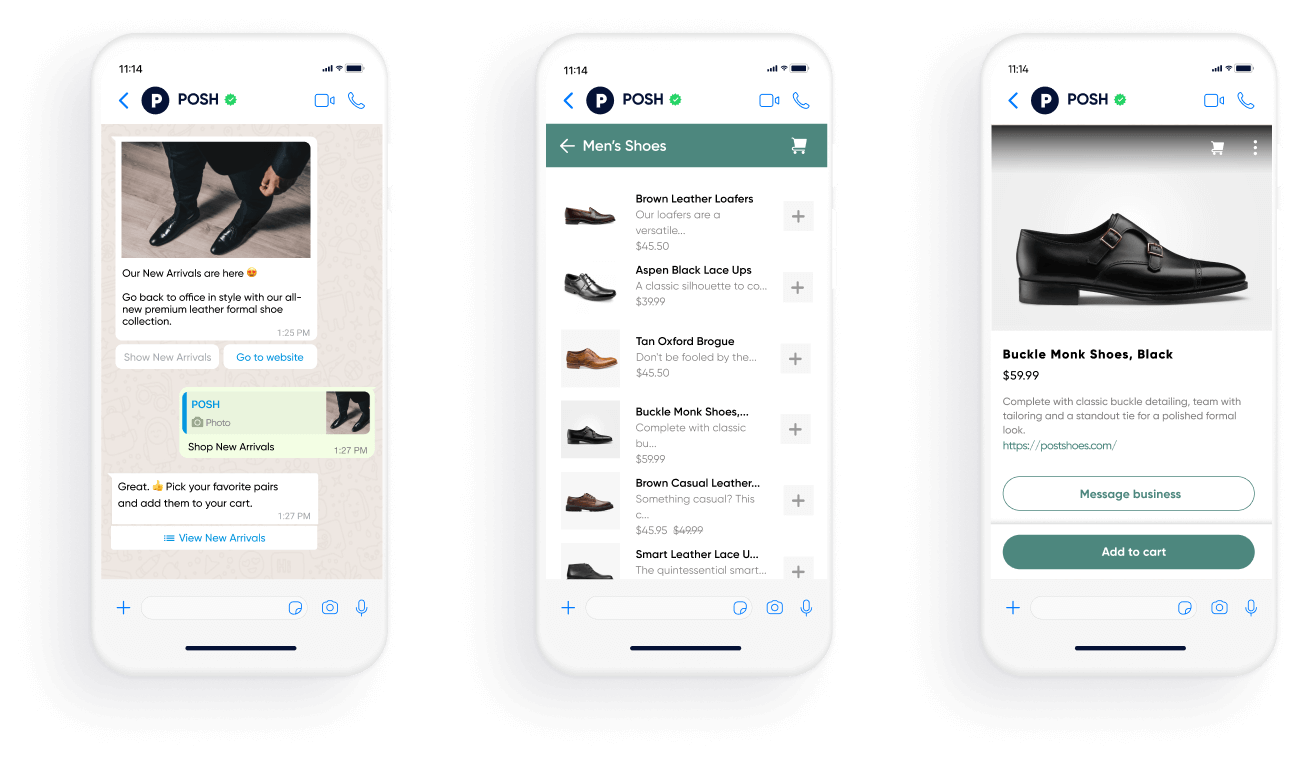
Architect, Insider’s customer journey orchestration tool, ties together all these personalized touchpoints into a cohesive customer experience. It also leverages essential AI-based capabilities, like:
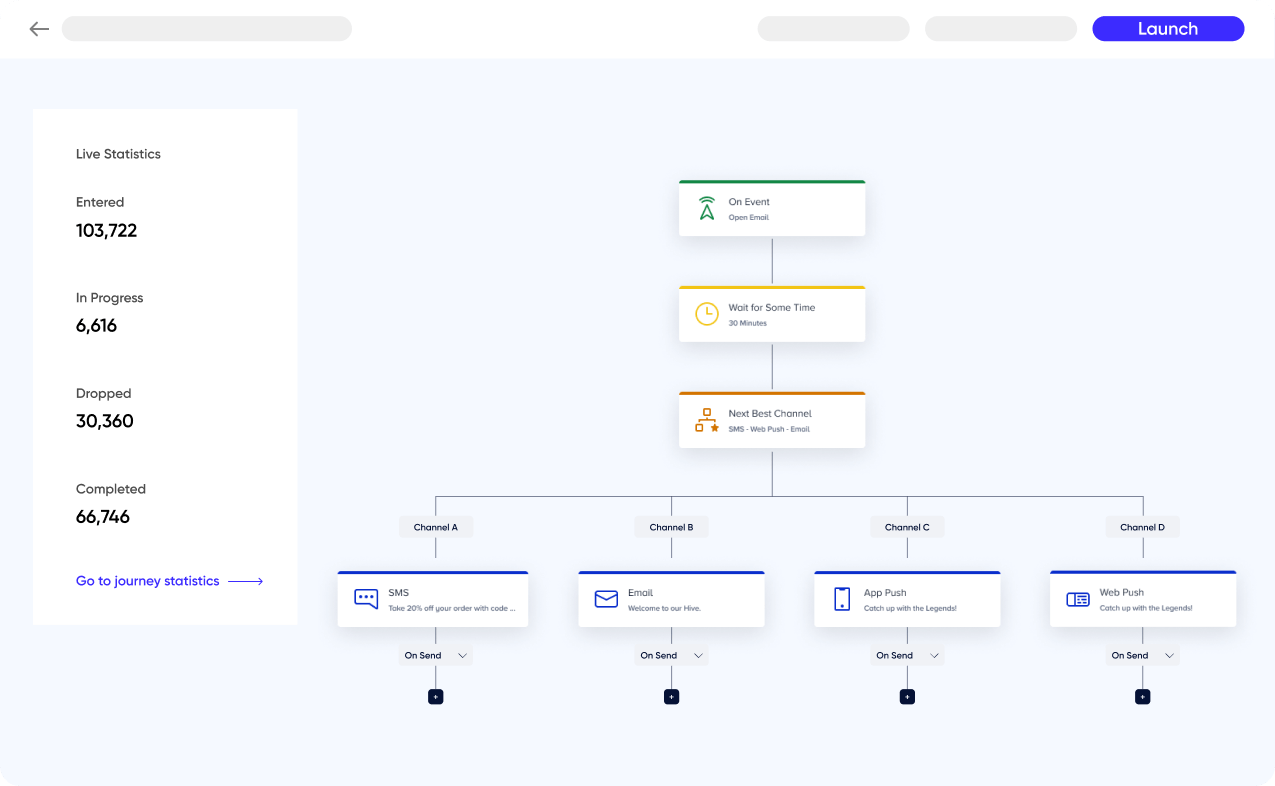
Insider also offers another AI tool that can automates segmentation, customer journey creation, and content generation called Sirius AI. Sirius AI’s generative AI capabilities can help you:
An enterprise marketing platform is a comprehensive suite of tools and technologies designed to support the marketing efforts of large-scale organizations, with the aim of improving the customer experience, increasing efficiency, and maximizing marketing efforts and budget.
Although there’s no platform that’s right for every team, in our experience the three criteria below are essential for enterprise companies:
We’ve now covered the theory behind enterprise marketing, so it’s time to get practical. Below are three success stories in which Insider helped enterprise marketing teams solve key problems, drive revenue, and improve their ROI.
Vodafone is a leading telecommunications company in Europe and Africa. It operates in 21 countries, with over 300 million mobile customers and 30 million global customers.
Their marketing team was looking for ways to enhance the company’s cross-channel marketing strategy and test new channels.
That’s why they collaborated intensively with Insider’s regional growth specialists to develop highly refined, AI-driven customer segments using various traits, behaviors, preferences, and more.
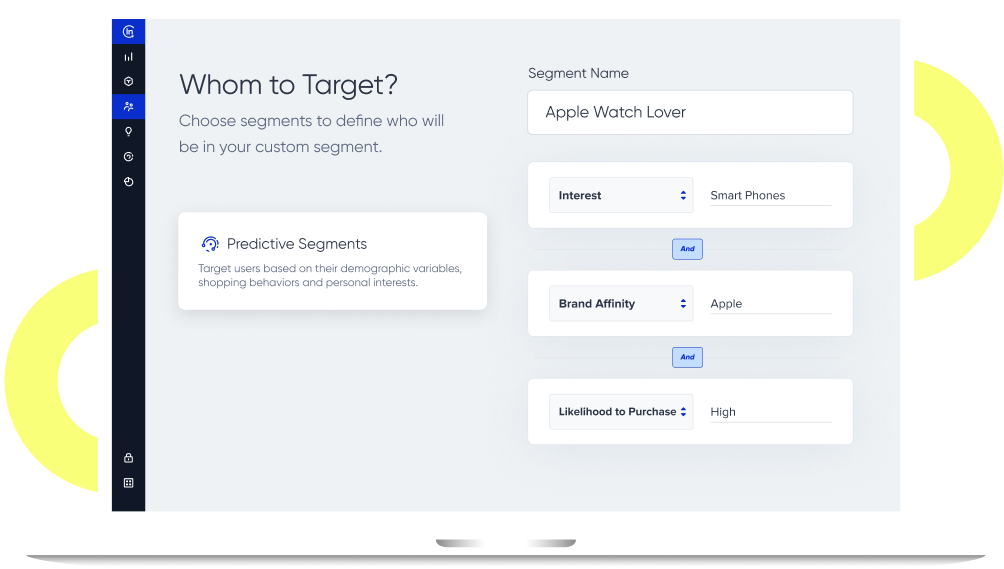
These segments facilitated the creation of tailored customer experiences across key channels for Vodafone, including on-site, email, web push, and Facebook. Insider’s expertise was instrumental in assisting Vodafone in executing a comprehensive multichannel marketing strategy.
In the end, Vodafone was able to dispatch timely and relevant communications, maintaining consistency across all targeted segments. This strategic approach improved Vodafone’s conversion rates by 159% and helped them achieve a 6x ROI.
You can read about their challenges and strategies in the complete case study.
Dover Saddlery, a premier equestrian retail chain, specializes in a wide array of horse tack, stable essentials, and equestrian attire. Committed to delivering world-class services and products since its inception, Dover Saddlery embarked on a strategic endeavor to completely change and personalize its customer engagement.
Insider’s expertise in helping enterprises deliver individualized customer experiences was crucial.
First, our CDP helped Dover Saddlery better understand its audience and create more accurate customer segments. From here, Dover Saddlery’s team started using Insider’s web personalization features to deliver engaging experiences across their site.
For example, they used InStory to deliver Instagram-like stories on their site. Besides engaging customers, this simple tool helped the team save resources by enabling them to repurpose Instagram content, rather than wait for lengthy design cycles from their internal design team.
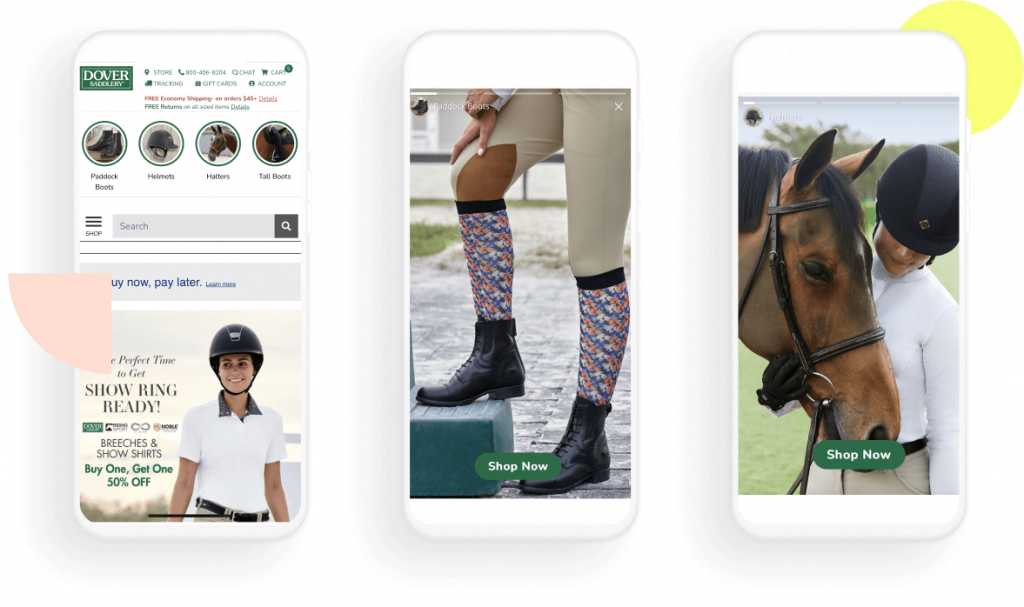
Overall, Dover Saddlery was able to generate:
You can find the complete case study on our website.
Slazenger is one of the world’s most established sports brands. With over 150 years of experience, the company is well-known for stylish sportswear covering cricket, tennis, swimming, hockey, golf, and much more.
Their marketing team sought a cross-channel solution to enhance customer engagement and boost their martech stack’s ROI. Impressed by Insider’s success stories and offerings in partner satisfaction and technical support, they chose our platform.
The company’s main aim was to tailor customer experiences across various channels, focusing on precise user segments with contextually relevant messages. Insider’s platform proved pivotal, especially Architect — our journey orchestration tool.
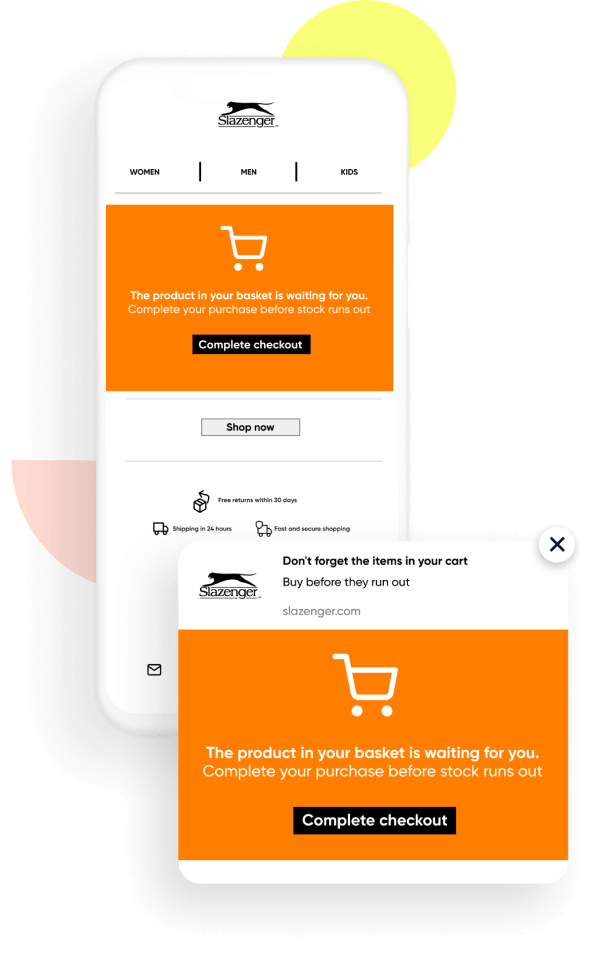
Architect enabled Slazenger to build automated journeys for all sorts of use cases, including discount and cart recovery campaigns. These journeys also spanned across a variety of channels, including on-site, email, push notifications, and SMS.
The result was an astounding 700% increase in customer acquisition and a 49x ROI in just two months. For the complete details, check out the case study on our website.
Insider’s enterprise marketing platform enables marketers to simplify complexity, work more efficiently, and improve key metrics like conversions, revenue, and acquisition costs.
Our platform allows you to:
Insider has helped over 1,200 global brands streamline their marketing efforts, improve revenue, and ROI, and make the most out of their efforts and budget.
Click here to schedule a demo and see how Insider can benefit your business.

Written by
Katie Morley
Katie is an award-winning content marketer with over eight years of experience in content strategy, development, and copywriting. As Global Content Director at Insider, she currently oversees content strategy across 26 regions. Fun fact: Katie read 64 books last year (for which she owes a long commute and two week-long holidays where she spent approximately six hours a day with her nose in a book).